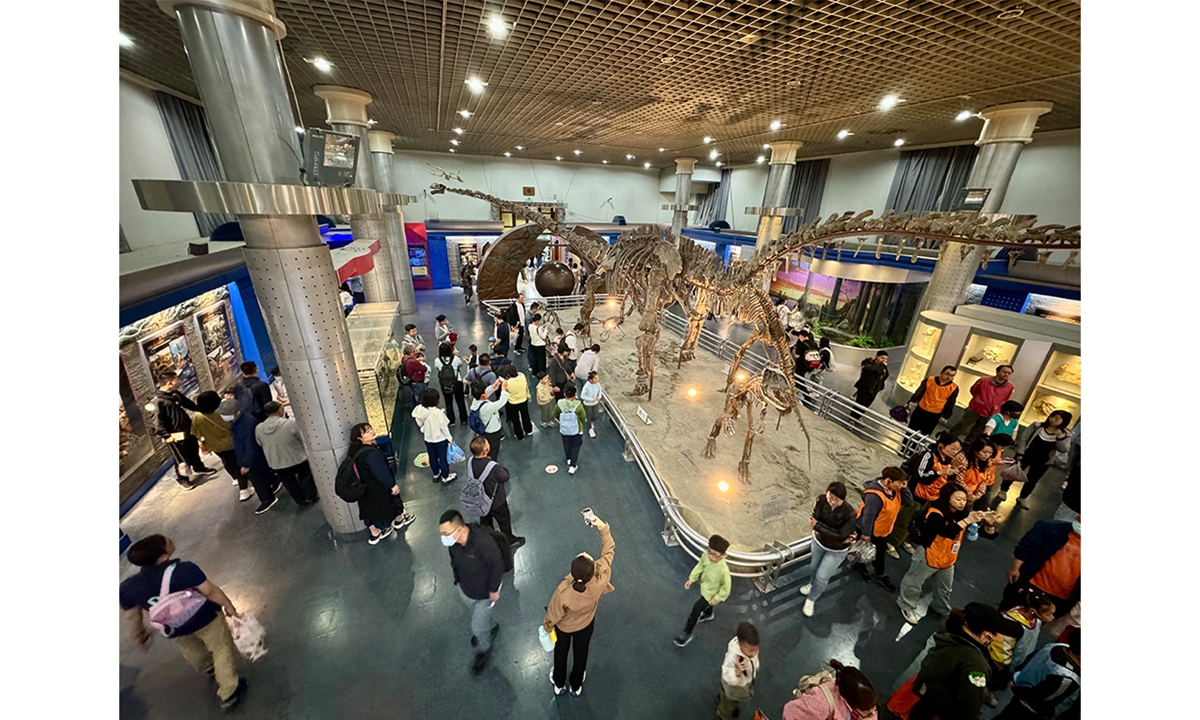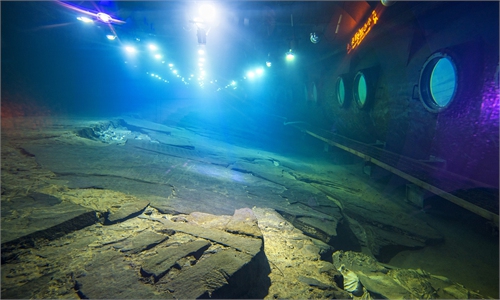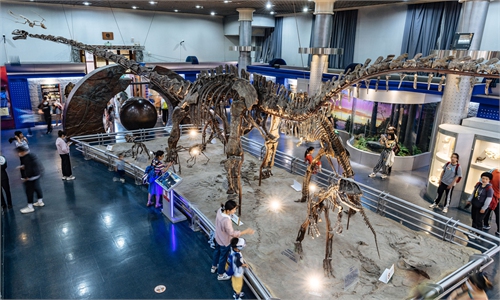ARTS / CULTURE & LEISURE
17-meter sperm whale to become crown jewel at China’s Natural History Museum

Visitors inside National Natural History Museum of China in Beijing Photo: Dong Feng/GT
Once stranded on Changxing Island in Dalian, Liaoning Province, the 17.1-meter-long body of a sperm whale will be placed at the National Natural History Museum of China in Beijing in 2029, the museum's representative surnamed Yang told the Global Times on Monday.
The 38.77-ton whale's body is set to become the museum's centerpiece when its new display hall opens in 2029.
When the whale's body was discovered in 2021, it became a sensation not only due to its "well-preserved condition," but also because this was the first time a sperm whale had been found stranded in the Bohai Sea region, Yang told the Global Times.
After salvaging the corpse, the animal's body was dissected and segmented. Then the parts were preserved in formalin solution to delay decomposition.
While details on how the whale will be displayed are still being worked on, Yang said that it is going to be the "crown jewel" placed at the center of the exhibition space. The new museum hall is set to be established somewhere near Dahongmen in Beijing's Fengtai district.
A "dried skeletal specimen" will be produced. Also, multiple traditional methods such as taxidermy will be used to recreate the whale's skin. Plastination technology will be also be used to preserve the animal's muscles, internal organs, and other parts.
"Preparing an animal's body for exhibition purposes is a rigorous process that involves scientific research into the item's integrity and sustainability," Wang Miao, a specimen making expert, told the Global Times.
Wang emphasized that "lawful guidance" also plays a major role in creating specimens in China. Taking the current sperm whale body as an example, its display plan follows both the country's Wildlife Protection Law and also the Museum's measures for Collection and Management of Exhibits.
"All these great efforts behind the display are aimed at enhancing the museum's popular science role. Real specimens can allow visitors to better see China's efforts in using technology in marine ecology management," Yang told the Global Times. She added that eye-catching pieces like the sperm whale make natural history "immersive and experiential."
Providing visitors with "immersive experiences" has been a much-underlined goal for the museum since 2023, when it changed its name from the Beijing Natural History Museum to become the first national-level museum focusing on natural history exhibits.
Other than the gigantic specimen, a virtual program called "Nature Above the Clouds" has been launched by the museum. Using experiential tools such as 3D models and animations, the program allows viewers to virtually experience stories about Africa's wildlife, the plant world, prehistoric mammals and also invertebrates.
"Compared with comprehensive museums focused on cultural relics, natural history museums often remain 'niche' and fail to capture widespread attention. However, showcasing natural history is just as important as displaying cultural artifacts, as it sheds lights on the changing face of nature and the coexistence of humans and nature," Wang noted.



